part I
Brutalism is a fairly controversial style of architecture, and not only in the Czech Republic. Around the world, architectural professionals and the layman public often consider the blocky shapes and raw concrete of brutalist buildings unsightly. However, in many cases, these structures were designed as complete artworks which featured a distinct atmosphere and unforgettable interiors. Brutalist buildings are unique monuments to their time which today are slowly disappearing or being transformed through insensitive reconstruction practices that strip them of their special charm.
In Prague, the Transgas building and the luxurious Hotel Praha have both been demolished, and in Karlovy Vary, the battle over the reconstruction of the interior of Hotel Thermal, designed by Věra and Vladimír Machonin, has already been lost. Soon the New Stage of the National Theatre in Prague will also be undergoing renovations, and the shape which these will take is a hotly discussed issue.
 The interior foyer of the New Stage of the National Theatre with a chandelier by Pavel Hlava and Jaroslav Štursa and new T2407 armchairs, photo by Dita Havránková
The interior foyer of the New Stage of the National Theatre with a chandelier by Pavel Hlava and Jaroslav Štursa and new T2407 armchairs, photo by Dita Havránková
It is also with these renovations that our pet project of the last two years is closely connected. The New Stage was originally designed by renowned architect Karel Prager in 1983. As a part of the furnishings, he chose to use an armchair designated the T2407, which was designed by Viliam Chlebo. The chair and the designer himself were relatively unknown to the public, but Prager saw potential in the design, which was originally intended for mass production. For the New Stage, Prager and Chlebo created a special, luxury version of the chair. Only 250 were ever produced, and today a scant few remain in the theatre, most of them in quite a poor condition. This is why, after lengthy preparations, we are now releasing a re-edition of the T2407 armchairs designed by Viliam Chlebo for the New Stage of the National Theatre. It is our small contribution toward the preservation of this iconic architectural style.
 Transgas, demolished in 2020 Foto: Filip Šlapal, Praha brutálně krásná.
Transgas, demolished in 2020 Foto: Filip Šlapal, Praha brutálně krásná.
The roots of brutalism
The story of these armchairs begins after the Second World War, when the brutalist movement slowly began to emerge in England and France, growing out of the modernist work of architects such as Le Corbusier. While Czechoslovakia and other parts of the Eastern Bloc focused on the style of socialist realism, Western architects began experimenting with different surfaces and materials. Architectural studios created the first designs for robust buildings in which reinforced concrete or other raw materials played a dominant role. The term brutalism comes from the French phrase béton brut, meaning raw concrete.
In the brutalist style, the construction materials are intentionally left in a bare or unfinished state, which usually gives the buildings a grey or monochrome colour palette. The structures are blocky or feature angular geometric forms with no ornamentation, lending them a generally minimalist appearance. The raw concrete is often combined with glass elements or façades, resulting in a distinctly modern look that can often appear out of place in older European cities.
Brutalism began to fall out of favour in the 1970s when it was criticised as being too crude in appearance and too architecturally austere. Brutalist buildings were also maligned by the general public for ignoring the historical values of the surrounding buildings. Today the term is most often used in reference to buildings that are in danger of disappearing or have long since been torn down. One example is the recent demolition of the Transgas building in Prague’s Vinohrady neighbourhood, which only occurred after a lengthy review of the officials’ decision. This just confirms the controversial nature of brutalist architecture. The only thing that can save these buildings from demolition in this country is declaring them national monuments.
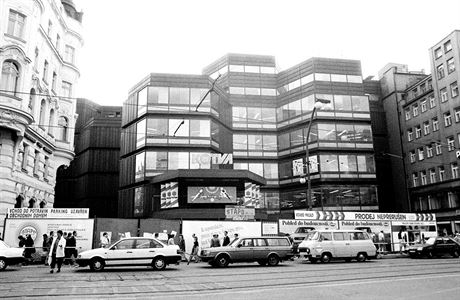
The Kotva Department Store in Prague, designed by Věra Machoninová and her husband Vladimír and built between 1970 and 1975
Brutalism in the Czech Republic
During the 1950s the brutalist movement spread throughout the entire Western world. Buildings in this austere style can even be found in Latin America and Asia, but it wasn’t until later that it arrived in Czechoslovakia. It was helped by the easing of the political situation in the 1960s, which slightly lifted the Iron Curtain. Věra Machoninová, one of the top Czech architects of the period, recalled that at that time Czechoslovak architects were very aware of what was happening in the West. The ideology-ridden style of socialist realism was finally gone, and architects were free to create and catch up with the rest of Europe.
In the Czech Republic, one can see a number of buildings in the brutalist style. In Prague alone, there is the terminal of the Main Railway Station, the New Stage of the National Theatre, the Kotva Department Store, and the InterContinental Hotel, among others. However, exemplary examples can be found in other cities as well, including the popular department store Prior in Olomouc and the large complex of Hotel Thermal in Karlovy Vary. Typical Czech representatives of this modern style include the architects Karel Bubeníček, Věra Machoninová, and Karel Prager.

The New Stage of the National Theatre in Prague
Brutalist buildings in Prague
All tourists who come to Prague by train are welcomed by the terminal of the Main Railway Station, which was designed by some of the best architects of the time. The glass towers on the roof were created by Jan Bočan and Stanislav Libenský. Alena Šrámková designed the granite tiling of the check-in hall. The ceramic wall tiles (preserved today only in the area of the taxi stand under the main thoroughfare) were created by Helena Samohelová. And the original orientation system, which unfortunately was not preserved, was designed by Jiří Rathouský.
Other significant examples of brutalist architecture can be found just a stone’s throw from the Main Railway Station. Until it was demolished in 2020, the Transgas building towered over Wenceslas Square. And a few dozen metres from its former site stands the Federal Assembly Building, designed by Karel Prager, which is now used by the National Museum. It was also Prager who won the competition in 1980 to complete the design of the then partially constructed New Stage of the National Theatre.
Viliam Chlebo’s contribution to the New Stage
There wasn't much time to furnish the interior of this brutalist building, so Prager looked for popular, high-quality products that were currently on the market. Chlebo’s T2407 armchair was being mass-produced at the time and was exhibited at a number of exhibitions and trade fairs, where it netted its designer several awards.
The chair caught Prager’s eye with its airy frame and elegant design. However, the original canvas upholstery was not presentable enough for a project as prestigious as the New Stage of the National Theatre, so Prager and Chlebo altered the design to feature leather upholstery. This special version was produced exclusively for the New Stage.
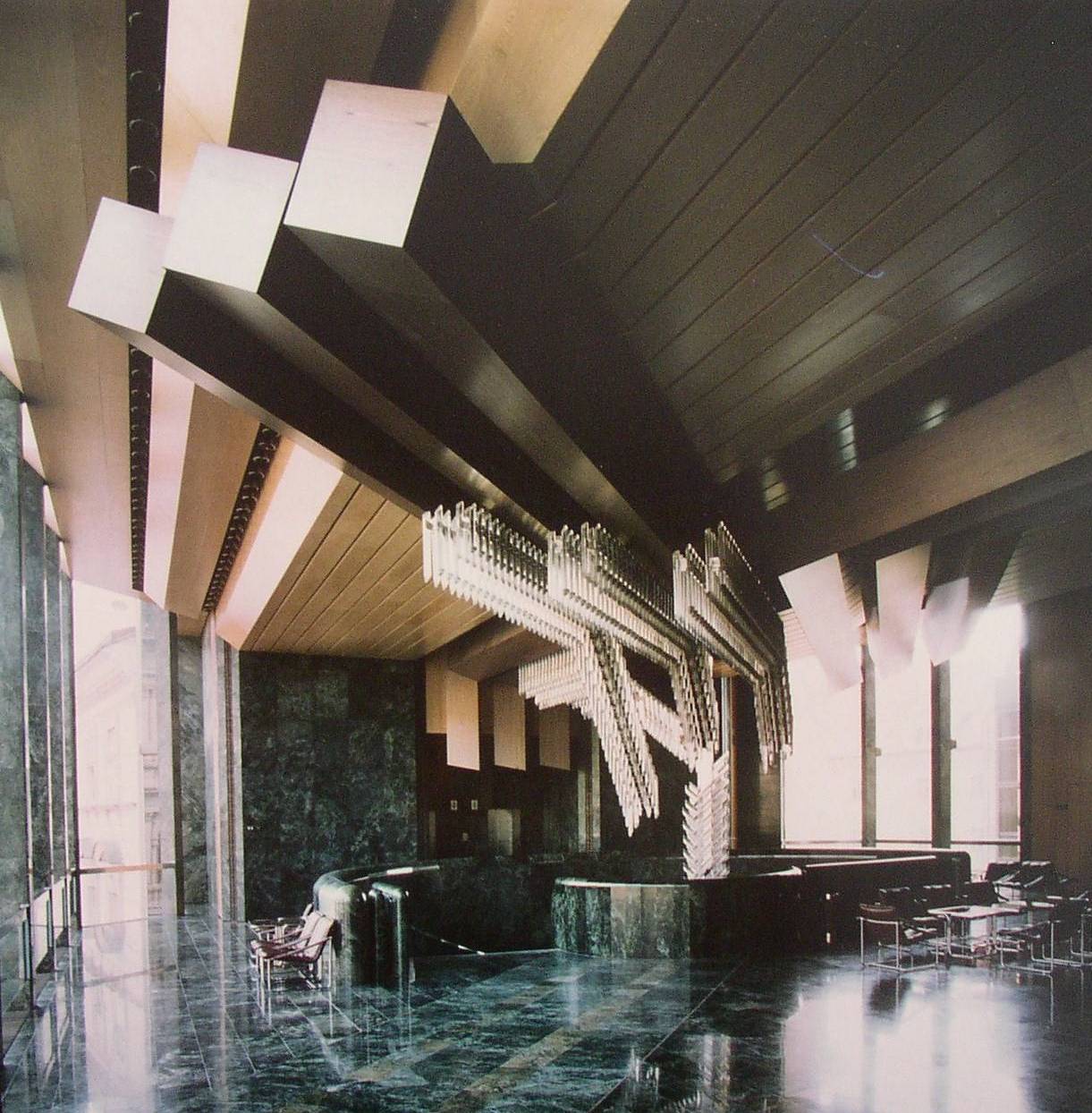 The interior of the New Stage, foto
The interior of the New Stage, foto
A date with Karel Prager
Chlebo met with Prager in the architect’s studio to work out how to incorporate the chairs into the interior of the new brutalist building. The structure was to have an unconventional exterior and interior, and Prager demanded quality furnishings to complete the impressive space. He had a reputation for not letting anything stand in his way when he decided to do something, and his collaboration with Chlebo was no exception. The manufacture of the metal frame of the chair remained unchanged, but the creation of the leather upholstery was taken over by a workshop in Slaný. A total of 250 chairs were ordered for the New Stage of the National Theatre, several which can still be found there today.
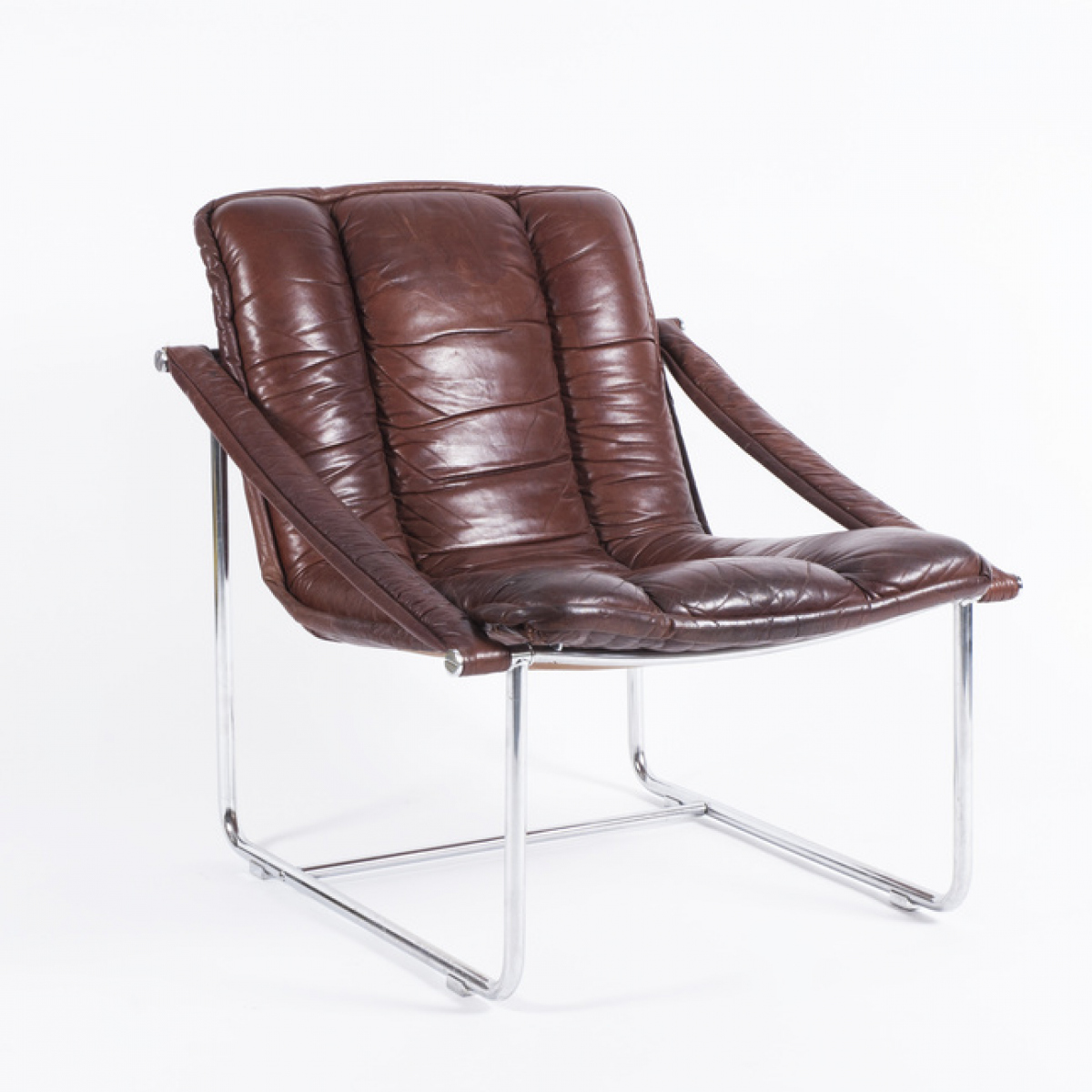
Original T2407 armchair created for the New Stage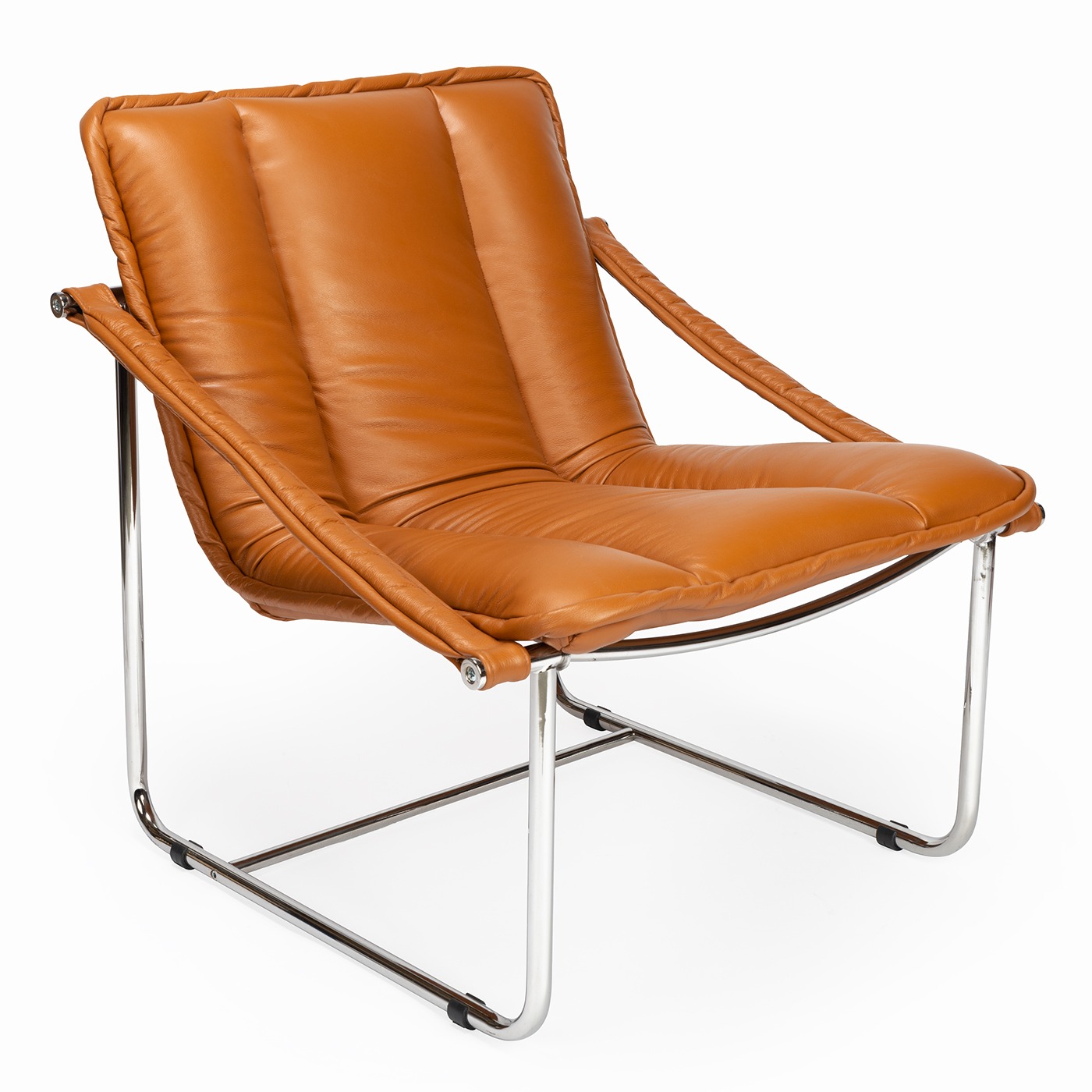
New armchair for the New Stage of the National Theatre, photo by Damián Skořepa
Viliam Chlebo’s life and work
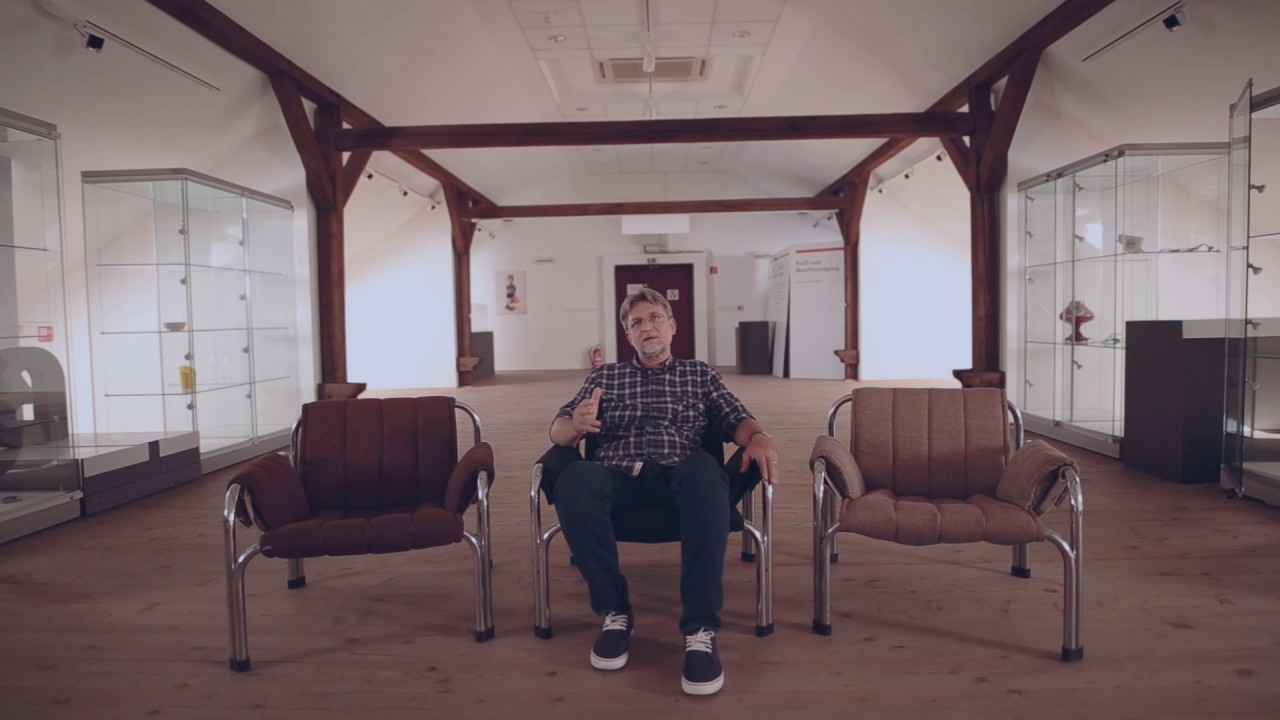 Viliam Chlebo
Viliam Chlebo
Viliam Chlebo is a Slovak architect and furniture designer. He studied construction and furniture design at the Secondary School of Woodworking in Spišská Nová Ves. He completed his studies in 1974, after which he was employed at the Research Institute of the Woodworking and Furniture Industry in Bratislava.
Chlebo is best known for his functionalist seating designs. He created furniture for mass production, in which he paid close attention to function, material, technology, and ergonomics. His T2403 and T2407 series armchairs were awarded top prizes for design, including the Gold Medal for Design at the Consumer Goods Retail Exhibition in Brno in 1980 and the Outstanding Product of the Year Award at a 1980 trade fair in Prague. The chairs were used in many administrative buildings throughout Czechoslovakia. Prior to its extensive reconstruction in 2012, Chlebo’s T2403 armchairs even furnished the interior of the Tugendhat Villa in Brno, which architect Ludwig Mies van der Rohe designed.
In the 1990s Chlebo opened his studio where to this day he designs blueprints, interiors, and furnishings for houses and apartments.
The Tugendhat Villa in Brno with Chlebo’s T2403 armchairs
New chairs by Nanovo
 Interior of the foyer of New Stage with original and new chairs T2407, photo by Dita Havránková
Interior of the foyer of New Stage with original and new chairs T2407, photo by Dita Havránková
It is out of respect and admiration for brutalist architecture and design that we decided to revive Viliam Chlebo’s T2407 armchairs from the New Stage of the National Theatre, one of the most interesting brutalist interiors in the country. The chair's frame is made from chrome tubing, and the seat and back are custom-made in an upholstery workshop in the Czech Republic using high-quality Italian leather. We worked directly with Viliam Chlebo on this re-edition of his design, and we made every effort to ensure the highest quality craftsmanship in the chairs’ production so that they would serve as a fitting legacy to his work.
The future of brutalism
The topic of brutalist architecture and furniture, in particular with regard to the New Stage of the National Theatre, is a pressing issue at the moment. In recent years, brutalism has experienced an unprecedented surge in popularity, and examples of brutalist architecture can be found more and more frequently on the list of cultural monuments. Many brutalist buildings from the 1960s and 1970s including hotels, shopping centres, and even the former headquarters of the Communist Party are now in contention to join the list of protected properties. However, according to preservationists, time is running out for many of these buildings. And if we delay in protecting them, we risk losing them.
Fortunately, the New Stage of the National Theatre was declared a cultural monument in 2021. This guarantees, to some extent, that the results of the planned reconstruction will not turn out as sadly as, for example, the renovation of Hotel Thermal in Karlovy Vary. For some time already we have been in contact with the architectural office that is preparing the report and budget for this planned reconstruction. It is our hope that they will work to preserve and repair as much of the original interior as possible. However, in the event that some of the original furniture cannot be repaired, it would be our great honour to furnish the New Stage with our new replicas of the original T2407 armchairs.



